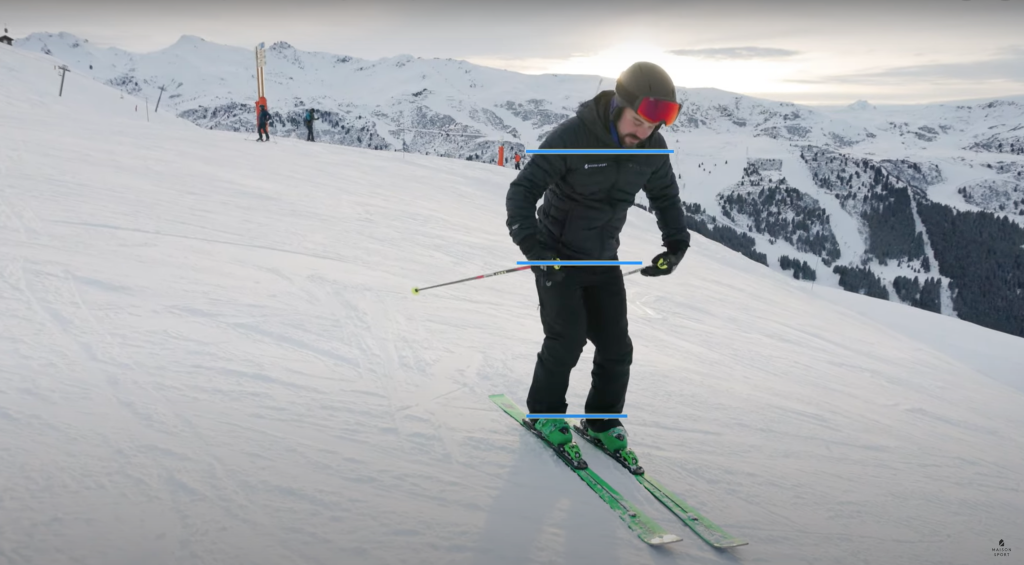Ice is a common occurrence in European ski resorts and tends to form when snow melts during the day as temperatures rise and the resulting water freezes overnight. If there is no fresh snow to save the day, icy conditions may be unavoidable. However, skiing on ice isn’t as frightening as it is often made out to be.
Skiing on ice can be nerve-wracking, especially for beginner and intermediate skiers. But if you know the right tools and techniques to help you, then there is nothing to fear! Learning to ski in variable conditions is a key skill that will advance your skiing to the next level.
Read on to discover 4 expert tips from Aaron T, BASI Level 4 Qualified Ski Instructor and Co-Founder of Maison Sport, to help skiers of all levels ski on ice with confidence.
1. Equipment
Without the friction of fresh powder, it can be difficult for your skis to grip the snow. So, the first step to being able to tackle icy slopes with confidence is to ensure your skis have sharp edges. This will allow them to bite into the ice better. You can get your edges sharpened by a professional at a ski shop in resort. You want your ski equipment to help you not hinder you, so getting your edges sharpened is a must, especially when conditions are icy.

2. Confidence
Compared to fresh snow, when skiing on ice you will pick up a bit more speed and you are likely to hear your edges scraping across the ice (which isn’t a pleasant sound). But don’t let this throw you off. When the fear sets in, it is common for your technique and confidence to go out of the window, which can result in injury. It’s important to adjust your expectations when skiing on ice so that you remain calm and in control. On ice, you still need to be making the same movements as you would on softer snow. Ski with confidence on every turn – if you hesitate or back off the ice, you will only make it harder for yourself!
3. Body Position
It’s important to maintain a good general skiing stance when skiing on ice. Keep your hands in front of you and your shoulders forward, facing down the hill, so that you are in a strong, balanced position. When skiing on ice, you should keep your feet slightly more stacked underneath you than when skiing on normal snow. If you try to make big edge angles on your turns, your outside ski may slip away from you on the ice, causing you to lose balance. Be sure to maintain pressure on the outside ski when turning to help you achieve more grip and control and try to maintain an even stance width.

4. Tactical Skiing
If you are still struggling to turn on the ice, you can tactically plan your turns to avoid icy patches where possible. Look ahead and try to turn on areas of soft snow. Your edges will grip much better and it will feel a lot easier than tackling hard-packed ice. Another way to enhance your control is to traverse across the width of the slope. This will help you to manage your speed. When you turn across the hill you will be slowing yourself down rather than accelerating. If you do encounter an icy patch, stay calm and try to slide over it with flat skis.
Watch Aaron T. Demonstrate These Top Tips for Skiing on Ice in Action:
Try It Out on the Slopes!
Skiing on ice can be more challenging than skiing on fresh powder or slushy snow, but it’s still a fun and rewarding experience. The more you practise skiing on ice, the more confident you will feel and the more you will embrace it! Keep these top tips in mind and you’ll be skiing on ice like a pro in no time!
Book a ski lesson with an expert instructor to help you build confidence skiing on ice today!
You might also like: Top Tips for Powder Skiing: How to Master the Art of Skiing in Fresh Powder
